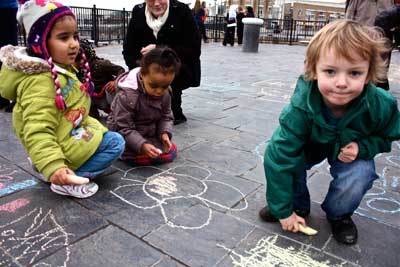The government have updated their guidance safeguarding children, making clear the responsibilities that individuals and organisations hold in ensuring that the children in their care stay safe. The updated legal responsibilities that health services, schools, police forces, social workers and other child-centred organisations face have been summarised in one central guidance document, which sets out what is required from each of them.
The new guidance makes it clear that every professional must take responsibility for safeguarding the children they work with. It covers, “the legislative requirements and expectations on individual services to safeguard and promote the welfare of children; and a clear framework for Local Safeguarding Children Boards (LSCBs) to monitor the effectiveness of local services”.
In July 2011, the Munro review of child protection was published. This document, titled “A Child-Centred System”, expressed concern that the needs of the individual child had, over a period of years, been subsumed under a growing set of guidance procedures. Professor Munro also criticised the ever-expanding nature of the child safeguarding guidance which, when trying to cover every eventuality that could occur in child protection terms, had “reduced clarity over the responsibilities of different professionals”.
 In one single document, the new guidance brings together all that professionals working with children need to know in one place, with children at its heart. In response to the Munro report, it also frees workers to use their professional judgement more, rather than be entirely guided by inflexible rules.
In one single document, the new guidance brings together all that professionals working with children need to know in one place, with children at its heart. In response to the Munro report, it also frees workers to use their professional judgement more, rather than be entirely guided by inflexible rules.
It replaces former legislative documents, including:
- Working together to safeguard children (2010)
- Framework for the assessment of children in need and their families (2000), and
- Statutory guidance on making arrangements to safeguard and promote the welfare of children under section 11 of the Children Act 2004 (2007).
One of the benefits of this new report is that, although it contains much of the same information about responsibilities as the previous legislation, it is presented in a more accessible summary. Schools, social services, police forces and health workers will find it easier to find the guidance they need to provide the best care possible for the children they are responsible for, with regard to not only issues of safeguarding, but also general child and family welfare concerns. It is hoped that it will reduce the confusion and lack of clarity that this legislation has previously been accused of.
It is recommended that all local authority Chief Executives, LSCB Chairs, senior managers within those organisations that commission and provide family and children's services, Directors of Children's Services, and managers and staff in the social work, health, teaching and law enforcement professions study the document and its recommendations. Third sector organisations, Academy Trusts, and service providers in the community sector who work with children and families should also read the revised guidance. This will enable them to respond in a correct, appropriate and timely way to children's needs, in a child-centred, coherent and respectful way. A young person's guide to Working Together to Safeguard Children is also in the pipeline, with the input of the Director of the Office of Children's Rights.
(Photo Credit: National Assembly for Wales and Rega Photography, Creative Commons Licences)